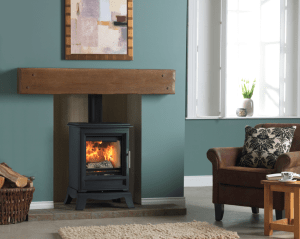 It’s been just over two months, since the official launch of Ecodesign ready stoves. This is a positive move towards reducing unwanted emissions from the combustion of wood in domestic stoves fireboxes. As a company we are excited to be contributing to such a key development, in a more environmentally friendly way of heating.
It’s been just over two months, since the official launch of Ecodesign ready stoves. This is a positive move towards reducing unwanted emissions from the combustion of wood in domestic stoves fireboxes. As a company we are excited to be contributing to such a key development, in a more environmentally friendly way of heating.
What is the main technical point of the Ecodesign rules?
The key point of the Ecodesign rules is to significantly reduce unwanted emissions, such as unburned fuel like gaseous hydrocarbons, carbon monoxide and microscopic particles of soot and dust, from the combustion of wood, while keeping a good level of thermal efficiency. It is these emissions, which are contributing towards poor air quality, and need to be addressed.
How Charlton & Jenrick became Ecodesign Ready.
At Charlton & Jenrick our very first Ecodesign compliant fireboxes were independently tested and certified in 2013. Since then we have created many more Ecodesign compliant stoves. The journey towards being Ecodesign ready did involve significant investment in costs and time, to ensure we reached the highest level of efficiency. In terms of the design process, we had to cover a range of things, such as:
Gasification – To achieve a thermal breakdown, the parts of a log need to be broken down into constituent parts, by thermally degrading it into gaseous and solid matter. A log does not just burn by itself. It is important to get the right burning conditions for optimum efficiency.
Secondary Air – Secondary air plays an important part in the burning off the gases produced by logs. In modern wood burning stoves, secondary air is used mainly as an airwash, to help clean the glass window of a stove. But in a high efficiency stove, secondary air has more than one use. Furthermore, a portion of secondary air also can also be used to act as primary air, by promoting the gassing off from the solid logs during the burn cycle.
Tertiary Air – The development of tertiary air efficiency is one of the key elements, which has increased the efficiency of stoves in recent years. Tertiary air is secondary air, which is being burned in a stove – the final burn if you will, to remove even more particulate emissions.
Mixing of fuel and air – A poor thermal efficiency can be caused by air that plays no part in the combustion process, and just cools the firebox and carries away heat into the flue. Mixing is a vital part of stove efficiency, which is often overlooked. However, a good mix of fuel and air is critical, an Ecodesign stove will place some of its efficiency success due to an optimal mix of fuel and air.
 Baffling – Carefully designed baffles increase the efficiency of a stove. In days gone by stoves didn’t have any baffling, which caused heat to almost instantly disappear up the chimney. Baffling allows a longer dwell time of the gases, within the burn chamber to complete the combustion process, which contributes to added efficiency.
Baffling – Carefully designed baffles increase the efficiency of a stove. In days gone by stoves didn’t have any baffling, which caused heat to almost instantly disappear up the chimney. Baffling allows a longer dwell time of the gases, within the burn chamber to complete the combustion process, which contributes to added efficiency.
In Conclusion:
The conditions inside a firebox are critical to the efficiency of a stove. The key to success with a high efficiency, ecodesign stove is to ensure all elements are working at maximum efficiency, and are also working in perfect harmony together. At Charlton & Jenrick you can be sure of our commitment to always be at the forefront of stove efficiency.
View our range of ecodesign stoves online at – https://www.charltonandjenrick.co.uk/brands/purevision/gallery/








